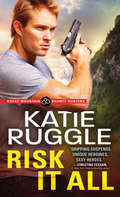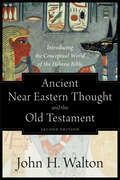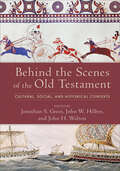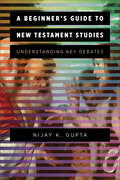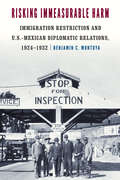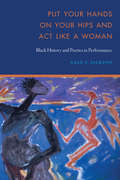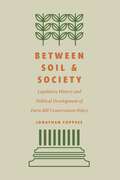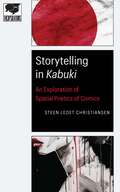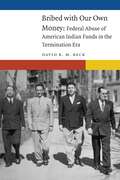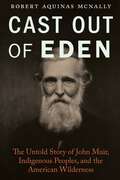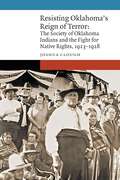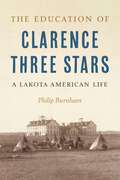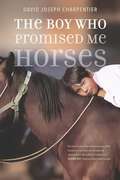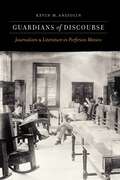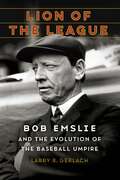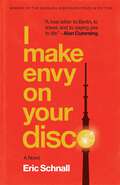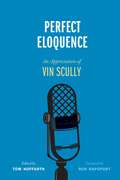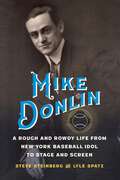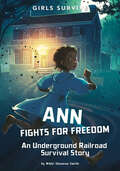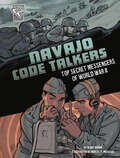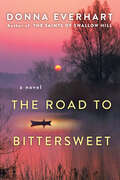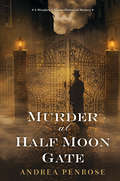- Table View
- List View
Risk It All (Rocky Mountain Bounty Hunters #2)
by Katie RuggleFull of humor and danger, romance and intrigue, Risk it All is for fans of:Romantic suspense with a quirky small town feelMountain men wrapped in flannelA slow burn that steadily turns up the heatAnd complete opposites forced to rely on each other as they trek through the RockiesCara Pax never wanted to be a bounty hunter. She's happy to leave chasing criminals and tackling skips to her sisters. But if she wants her dreams of escaping the family business and becoming a kindergarten teacher to come true, she's got one last job to finish… Only problem is, she doesn't think her bounty is guilty.Henry Kavenski is a man with innocence to prove. When he realizes that Cara believes him, he'll do anything to keep her out of harm's way. Escaping criminals and dodging cops might not be the best time to fall in love, but Henry and Cara won't give up, not when there's a chance at a new life ahead—if they can survive the fall.What Your Favorites Are Saying:"I love Ruggle's characters. They're sharply drawn, and vividly alive. I'm happy when they find each other. These are wonderful escapist books."—CHARLAINE HARRIS, #1 New York Times Bestselling Author of the Sookie Stackhouse series"Sexy and suspenseful, I couldn't turn the pages fast enough."—JULIE ANN WALKER, New York Times and USA Today Bestselling Author, for Hold Your Breath"Chills and thrills and a sexy slow-burning romance from a terrific new voice."—D.D. AYRES, author of the K-9 Rescue series, for Hold Your Breath
Ancient Near Eastern Thought and the Old Testament: Introducing The Conceptual World Of The Hebrew Bible
by John H. WaltonA leading evangelical scholar surveys the cultural context of the ancient Near East, bringing insight to the interpretation of specific Old Testament passages. Now thoroughly updated and revised throughout.
Behind the Scenes of the Old Testament: Cultural, Social, And Historical Contexts
by Jonathan S. Greer;John W. Hilber;and John H. WaltonA team of world-class scholars covers the full range of Old Testament backgrounds studies in a concise, authoritative, and comprehensive manner.
A Beginner's Guide to New Testament Studies: Understanding Key Debates
by Nijay K. GuptaThis accessible and balanced introduction to key questions in New Testament studies fairly presents the spectrum of viewpoints on debated topics.
Risking Immeasurable Harm: Immigration Restriction and U.S.-Mexican Diplomatic Relations, 1924–1932
by Benjamin C. MontoyaThe debate over restricting the number of Mexican immigrants to the United States began early in the twentieth century, a time when U.S.-Mexican relations were still tenuous following the Mexican Revolution and when heated conflicts over mineral rights, primarily oil, were raging between the two nations. Though Mexico had economic reasons for curbing emigration, the racist tone of the quota debate taking place in the United States offended Mexicans&’ national pride and played a large part in obstructing mutual support for immigration restriction between the United States and Mexico.Risking Immeasurable Harm explains how the prospect of immigration restriction affects diplomatic relations by analyzing U.S. efforts to place a quota on immigration from Mexico during the late 1920s and early 1930s. The controversial quota raised important questions about how domestic immigration policy debates had international consequences, primarily how the racist justifications for immigration restriction threatened to undermine U.S. relations with Mexico. Benjamin C. Montoya follows the quota debate from its origin in 1924, spurred by the passage of the Immigration Act, to its conclusion in 1932. He examines congressional policy debate and the U.S. State Department&’s steady opposition to the quota scheme. Despite the concerns of American diplomats, in 1930 the Senate passed the Harris Bill, which singled out Mexico among all other Latin American nations for immigration restriction. The lingering effects of the quota debates continued to strain diplomatic relations between the United States and Mexico beyond the Great Depression. Relevant to current debates about immigration and the role of restrictions in inter-American diplomacy, Risking Immeasurable Harm demonstrates the correlation of immigration restriction and diplomacy, the ways racism can affect diplomatic relations, and how domestic immigration policy can have international consequences.
Put Your Hands on Your Hips and Act Like a Woman: Black History and Poetics in Performance
by Gale P. JacksonIn a gathering of griot traditions fusing storytelling, cultural history, and social and literary criticism, Put Your Hands on Your Hips and Act Like a Woman &“re-members&” and represents how women of the African diaspora have drawn on ancient traditions to record memory, history, and experience in performance. These women&’s songs and dances provide us with a wealth of polyphonic text that records their reflections on identity, imagination, and agency, providing a collective performed autobiography that complements the small body of pre-twentieth-century African and African American women&’s writing. Gale P. Jackson engages with a range of vibrant traditions to provide windows into multiple discourses as well as &“new&” and old paradigms for locating the history, philosophy, pedagogy, and theory embedded in a lineage of African diaspora performance and to articulate and address the postcolonial fragmentation of humanist thinking. In lyrically interdisciplinary movement, across herstories, geographies, and genres, cultural continuities, improvisation, and transformative action, Put Your Hands on Your Hips and Act Like a Woman offers a fresh perspective on familiar material and an expansion of our sources, reading, and vision of African diaspora, African American, and American literatures.
Between Soil and Society: Legislative History and Political Development of Farm Bill Conservation Policy
by Jonathan CoppessThe United States spends approximately $5 billion each year on federal programs designed to conserve natural resources and address the environmental consequences of modern agricultural production. Like farm policy, agricultural conservation policy is rooted in the Roosevelt administration&’s New Deal efforts of the 1930s. Farm conservation policy has waxed and waned since then, related to fluctuating economic and environmental concerns. In Between Soil and Society Jonathan Coppess traces the history and development of U.S. conservation policy, especially as it compares to and interacts with the development of farm policy. By answering questions about the differences in political support and development for these similar policy regimes, with efforts to apply legal and political theory to understand the differences, Coppess considers the implications of climate change and lessons for future policy development. One of the few books to make sense of the legal and economic analysis of agricultural conservation policy, Between Soil and Society provides a window into larger issues of American politics, governance, and policy development.
Storytelling in Kabuki: An Exploration of Spatial Poetics of Comics (Encapsulations: Critical Comics Studies)
by Steen Ledet ChristiansenSteen Ledet Christiansen&’s Storytelling in &“Kabuki&” explores the series created by David Mack—a slow, recursive narrative that focuses on the death of Kabuki and her past. The series ran from 1994 to 2004 in a variety of miniseries, one-shots, and spin-offs, rather than following a conventional American monthly release schedule. Most of the series explores different perspectives on the same event and adds background to Kabuki&’s past, usually through surreal sequences, dreams, and near-death experiences. The flexibility of comics&’ approach to chronology, space, focalization, narrative, and fictionality enabled Mack to produce an unusual experience. Kabuki tells a story that can only exist via comics. Christiansen analyzes the visual design of the series, a heterogeneous collection of styles depending on the story. To understand Kabuki, it is crucial to explore the visual styles, as well as the use of visual and spatial rhymes and mixed media forms. Because Kabuki employs a complex layering of focalizations, diegetic levels, and metafictional self-reflectivity that is rare in mainstream American comics, it utilizes a narrative poetics that focuses on constant repeating, restating, and returning to the same events.Kabuki&’s unique compositional layering allows Christiansen to provide a clear example of how comics work while also expanding on critical vocabulary, especially in terms of spatial poetics. By exploring spatial form, Christiansen illuminates and gives a critical framework to a different and underexamined aspect of comics.
Bribed with Our Own Money: Federal Abuse of American Indian Funds in the Termination Era (New Visions in Native American and Indigenous Studies)
by David R. BeckIn Bribed with Our Own Money David R. M. Beck analyzes the successes and failures of Indigenous nations&’ opposition to federal policy in the 1950s and 1960s. Focusing on case studies from six Native nations, Beck recounts how the U.S. government coerced American Indian nations to accept termination of their political relationship with the United States by threatening to withhold money that belonged to the tribes. Termination was the continuation—and, federal officials hoped, the culmination—of more than a century of policy initiatives intended to end the political relationship between Indian tribal nations and the federal government. Termination was also intended to assimilate American Indian individuals into the country&’s social and economic culture and to remove the remainder of reservation lands from federal trust. American Indians hoped to gain greater opportunities of self-governance and self-determination, but they wanted to do so under the protection of the federal trust relationship.Bribed with Our Own Money analyzes both successful and unsuccessful efforts of Native nations to oppose this policy within the larger context of long-standing federal abuse of tribal funds. It is the first book to view federal termination efforts grounded in bribery for what they were: a form of coercion.
Cast Out of Eden: The Untold Story of John Muir, Indigenous Peoples, and the American Wilderness
by Robert Aquinas McNallyJohn Muir is widely and rightly lauded as the nature mystic who added wilderness to the United States&’ vision of itself, largely through the system of national parks and wild areas his writings and public advocacy helped create. That vision, however, came at a cost: the conquest and dispossession of the tribal peoples who had inhabited and managed those same lands, in many cases for millennia. Muir argued for the preservation of wild sanctuaries that would offer spiritual enlightenment to the conquerors, not to the conquered Indigenous peoples who had once lived there. &“Somehow,&” he wrote, &“they seemed to have no right place in the landscape.&”Cast Out of Eden tells this neglected part of Muir&’s story—from Lowland Scotland and the Wisconsin frontier to the Sierra Nevada&’s granite heights and Alaska&’s glacial fjords—and his take on the tribal nations he encountered and embrace of an ethos that forced those tribes from their homelands. Although Muir questioned and worked against Euro-Americans&’ distrust of wild spaces and deep-seated desire to tame and exploit them, his view excluded Native Americans as fallen peoples who stained the wilderness&’s pristine sanctity. Fortunately, in a transformation that a resurrected and updated Muir might approve, this long-standing injustice is beginning to be undone, as Indigenous nations and the federal government work together to ensure that quintessentially American lands from Bears Ears to Yosemite serve all Americans equally.
They Came but Could Not Conquer: The Struggle for Environmental Justice in Alaska Native Communities
by Diane J. PurvisAs the environmental justice movement slowly builds momentum, Diane J. Purvis highlights the work of Indigenous peoples in Alaska&’s small rural villages, who have faced incredible odds throughout history yet have built political clout fueled by vigorous common cause in defense of their homes and livelihood. Starting with the transition from Russian to American occupation of Alaska, Alaska Natives have battled with oil and gas corporations; fought against U.S. plans to explode thermonuclear bombs on the edge of Native villages; litigated against political plans to flood Native homes; sought recompense for the Exxon Valdez oil spill disaster; and struggled against the federal government&’s fishing restrictions that altered Native paths for subsistence. In They Came but Could Not Conquer Purvis presents twelve environmental crises that occurred when isolated villages were threatened by a governmental monolith or big business. In each, Native peoples rallied together to protect their land, waters, resources, and a way of life against the bulldozer of unwanted, often dangerous alterations labeled as progress. In this gripping narrative Purvis shares the inspiring stories of those who possessed little influence over big business and regulations yet were able to protect their traditional lands and waterways anyway.
Resisting Oklahoma's Reign of Terror: The Society of Oklahoma Indians and the Fight for Native Rights, 1923–1928 (New Visions in Native American and Indigenous Studies)
by Dr. Joshua CloughThe oil and natural gas boom in pre–World War I Oklahoma brought unbelievable wealth to thousands of tribal citizens in the state on whose lands these minerals were discovered. However, as Angie Debo recognizes in her seminal study of the period, And Still the Waters Run, and, more recently, as David Grann does in Killers of the Flower Moon, this affluence placed Natives in the crosshairs of unscrupulous individuals. As a result, this era was also marked by two of the most heinous episodes of racial violence in the state&’s history: the Tulsa Race Massacre of 1921 and the Osage Murders between 1921 and 1925. In Resisting Oklahoma&’s Reign of Terror Joshua Clough details the responses of one largely forgotten Native organization—the Society of Oklahoma Indians (SOI)—to the violence and pillaging of tribal resources during the 1920s. Clough provides historical understanding of its formation and its shared values of intertribal unity, Native suffrage, and protection of Native property. He also reveals why reform efforts were nearly impossible in 1920s Oklahoma and how this historical perspective informs today&’s conflicts between the state and its Indigenous inhabitants. Through this examination of the SOI, Clough fills the historiographic gap regarding formal Native resistance between the dissolution of the national Society of American Indians in 1923 and the formation of the National Congress of American Indians in 1944. Dismissed or overlooked for a century as an inconsequential Native activist organization, the history of the SOI, when examined carefully, reveals the sophistication and determination of tribal members in their struggle to prevent depredations on their persons and property.
The Education of Clarence Three Stars: A Lakota American Life
by Philip BurnhamIn The Education of Clarence Three Stars Philip Burnham tells the life story of the remarkable Packs the Dog, a member of the Minneconjou Lakotas who was born in 1864 east of the Black Hills. His father, Yellow Knife, died when the boy was five, and the family eventually enrolled at Pine Ridge Agency with the Oglalas under an uncle&’s name, Three Stars. In 1879 Packs the Dog joined the first class of Indian students to be admitted to the Carlisle Indian Industrial School. An enthusiastic student, Clarence Three Stars, as he would come to be known, was one of five Lakota children who volunteered to stay at Carlisle after the three-year plan of instruction was finished—though he eventually left the school in frustration. Three Stars returned to Pine Ridge and married Jennie Dubray, another Carlisle veteran, and they had seven children. The life of Lakota advocate Three Stars spanned a time of dramatic change for Native Americans, from the pre-reservation period through the Dawes Act of 1887 until just before the Indian Reorganization Act of 1934. Three Stars was a teacher, interpreter, catechist, lawyer, and politician who lived through the federal policy of American Indian assimilation in its many guises, including boarding school education, religious conversion, land allotment, and political reorganization. He used the fundamentals of his own boarding school education to advance the welfare of the Oglala Lakota people, even when his efforts were deemed threatening or subversive. His dedication to justice, learning, and self-governance informed a distinguished career of classroom excellence and political advocacy on his home reservation of Pine Ridge.
The Boy Who Promised Me Horses
by David Joseph Charpentier&“He tried to outrun a train,&” Theodore Blindwoman told David Joseph Charpentier the night they found out about Maurice Prairie Chief&’s death. When Charpentier was a new teacher at St. Labre Indian School in Ashland, Montana, Prairie Chief was the first student he met and the one with whom he formed the closest bonds. From the shock of moving from a bucolic Minnesota college to teach at a small, remote reservation school in eastern Montana, Charpentier details the complex and emotional challenges of Indigenous education in the United States. Although he intended his teaching tenure at St. Labre to be short, Charpentier&’s involvement with the school has extended past thirty years. Unlike many white teachers who came and left the reservation, Charpentier has remained committed to the potentialities of Indigenous education, motivated by the early friendship he formed with Prairie Chief, who taught him lessons far and wide, from dealing with buffalo while riding a horse to coping with student dropouts he would never see again. Told through episodic experiences, the story takes a journey back in time as Charpentier searches for answers to Prairie Chief&’s life. As he sits on top of the sledding hill near the cemetery where Prairie Chief is buried, Charpentier finds solace in the memories of their shared (mis)adventures and their mutual respect, hard won through the challenges of educational and cultural mistrust.
Guardians of Discourse: Journalism and Literature in Porfirian Mexico
by Kevin M. AnzzolinDuring Porfirio Díaz&’s thirty-year rule, Mexico dealt with the press in disparate ways in hopes of forging an informed and, above all, orderly citizenry. Even as innumerable journalists were sent to prison on exaggerated and unfair charges of defamation or slander, Díaz&’s government subsidized multiple newspapers to expand literacy and to aggrandize the image of the regime. In Guardians of Discourse Kevin M. Anzzolin analyzes the role and representation of journalism in literary texts from Porfirian Mexico to argue that these writings created a literate, objective, refined, and informed public. By exploring works by Porfirian writers such as Emilio Rabasa, Ángel del Campo, Rafael Delgado, Laura Méndez de Cuenca, and Salvador Quevedo y Zubieta, Anzzolin demonstrates that a primary goal of the lettered class was to define and shape the character of public life, establish the social position of citizens, and interrogate the character of civil institutions. These elite letrados—whom Anzzolin refers to as &“guardians of discourse&”—aimed to define the type of discourses that would buttress the transformed Mexico of the Díaz regime to forge a truly national literature that could be discussed among an expanded coterie of lettered thinkers. In addition, these Porfirian guardians hoped to construct an extensive and active public able to debate political and social issues via a press befitting a modern nation-state and create a press that would be independent, illuminating, and distinguished. Through an innovative look at Mexico&’s public sphere via literary fiction in the Porfirian era, Anzzolin contributes to our knowledge of Mexican and Latin American political, cultural, and literary history in the late nineteenth and early twentieth centuries.
Lion of the League: Bob Emslie and the Evolution of the Baseball Umpire
by Larry R. GerlachRobert Dean Emslie (1859–1943) spent fifty-six of his eighty-four years in professional baseball—eight as a player and forty-nine as an umpire. When arm problems ended his career as a Major League pitcher, he turned to umpiring, serving in that capacity for thirty-five seasons, then as an umpire supervisor for thirteen years. His longevity is all the more remarkable considering he toiled during the three most contentious and difficult decades umpires ever faced: the years from 1890 to 1920, when baseball transitioned from amateur to professional sport and from regional business to commercial entertainment industry. Emslie endured the rough-and-tumble umpire-baiting 1890s, the Deadball era, injuries from thrown and batted balls, physical and verbal assaults from players and fans, and criticism in the press. Among his most notable games, he called four no-hitters and worked as the base umpire in the famous Merkle&’s Boner game between the New York Giants and the Chicago Cubs at the Polo Grounds in 1908. He often clashed with Giants manager John McGraw, who nicknamed him &“Blind Bob.&” Yet he was widely praised by players and his peers. Honus Wagner, the great Pittsburgh shortstop, ranked Emslie the best National League umpire he had seen during his twenty-year career. Umpires Bill McGowan and Billy Evans respectively regarded him as &“the greatest base umpire of all time&” and &“one of the greatest umpires the game ever produced.&” Emslie was also the acknowledged master of baseball&’s rules such that National League presidents regularly consulted with him on controversial calls and protests. Emslie accepted a position as the chief of National League umpires, serving as an adviser to the National League president.Lion of the League is the biography of an umpire whose career spanned the formative years of modern baseball.
I Make Envy on Your Disco: A Novel (Zero Street Fiction)
by Eric SchnallWinner of the Barbara DiBernard Prize in Fiction It&’s the new millennium and the anxiety of midlife is creeping up on Sam Singer, a thirty-seven-year-old art advisor. Fed up with his partner and his life in New York, Sam flies to Berlin to attend a gallery opening. There he finds a once-divided city facing an identity crisis of its own. In Berlin the past is everywhere: the graffiti-stained streets, the candlelit cafés and techno clubs, the astonishing mash-up of architecture, monuments, and memorials. A trip that begins in isolation evolves into one of deep connection and possibility. In an intensely concentrated series of days, Sam finds himself awash in the city, stretched in limbo between his own past and future—in nightclubs with Jeremy, a lonely wannabe DJ; navigating a flirtation with Kaspar, an East Berlin artist he meets at a café; and engaged in a budding relationship with Magda, the enigmatic and icy manager of Sam&’s hotel, whom Sam finds himself drawn to and determined to thaw. I Make Envy on Your Disco is at once a tribute to Berlin, a novel of longing and connection, and a coming-of-middle-age story about confronting the person you were and becoming the person you want to be.
Perfect Eloquence: An Appreciation of Vin Scully
by Ron RapoportWhen Vin Scully passed away in 2022, the city of Los Angeles lost its soundtrack. If you were able to deliver a eulogy for him, what might it include? What impact did he have on you? What do you carry forward from his legacy? Sixty-seven essayists—one representing each season of his career calling games for the Los Angeles Dodgers, from 1950 through 2016—reflect on the ways his professional and private life influenced them. The contributions include a range of stories and remembrances from those who knew and followed him. The consensus of the contributions is that Scully&’s actions spoke louder than his well-recognized words. This collection includes fellow broadcasters as well as historians, players, journalists, celebrities, and others connected to the game of baseball, with each piece introduced by sports journalist Tom Hoffarth. Readers can consider Scully&’s life through common themes: his sincerity, his humility, his professionalism, his passion for his faith, his devotion to his family, his insistence on remembering and giving context to important moments in the history of not just the game but the world in general, all wrapped up in a gift for weaving storytelling with accurate reporting, fellowship with performance art, humor, and connection.
Mike Donlin: A Rough and Rowdy Life from New York Baseball Idol to Stage and Screen
by Steve Steinberg Lyle SpatzMike Donlin was a brash, colorful, and complicated personality. He was the most popular athlete in New York and was a star on the powerful New York Giants teams of 1905 and 1908. Though haunted by tragedy, including the deaths of both of his parents as a boy, Donlin was a charming, engaging, and kind-hearted man who also had successful careers on the stage and in film. One of the early &“bad boys&” among professional athletes, Donlin&’s temper and combativeness—compounded by alcoholism—led to battles with umpires and fans, numerous suspensions from the game, and even jail time. In 1906, when Donlin married vaudeville actress Mabel Hite, his life changed for the better, and their love story captivated the nation. Donlin left baseball after his sensational comeback for the dramatic 1908 season and joined Mabel on the stage, likely losing a Hall of Fame career. Then in 1912, at the age of twenty-nine, Mabel died of intestinal cancer. After making a final comeback as a player in 1914, Donlin starred in baseball&’s first feature film. He became a drinking buddy of actors John Barrymore and Buster Keaton and married actress Rita Ross. The couple moved to Hollywood, where Donlin became a beloved figure and appeared in roughly one hundred movies, mostly in minor roles. Despite his Hollywood career, Donlin stayed connected to the game he loved and was seeking a coaching job with the Giants when he died of a heart attack in 1933. At the dawn of the celebrity era of sports, Donlin was one of the nation&’s first athletes to capture the public&’s attention. This biography by Steve Steinberg and Lyle Spatz shows why.
Clinical Hematology: Theory and Procedures
by Mary Lou TurgeonDesigned to help students develop the professional entry-level competencies they need for certification and career success, this Sixth edition of Clinical Hematology strengthens the pedagogy that set the quality benchmark for hematology and includes the current, competency-based content needed by MLT and MLS students. In addition to state-of-the-art content, many, fully developed case studies with critical thinking discussion questions, and a strong emphasis on emerging molecular diagnostics and genomic medicine, the 6th edition encompasses the professional knowledge guidelines recommended by ASCLS Entry Level and Professional Body of Knowledge competencies in hematology, hemostasis and coagulation, and molecular applications. Throughout the text, a logical eight-part organization, clear explanations, and multiple learning tools help students master the theory underlying clinical hematology and the procedures used to diagnose and treat disorders of the blood and bone marrow.
Ann Fights for Freedom: An Underground Railroad Survival Story (Girls Survive)
by Nikki Shannon SmithTwelve-year-old Ann understands there is only one thing to be grateful for as a slave: having her family together. But when the master falls into debt, he plans to sell Ann and her younger brother. Ann is convinced her family must run away on the Underground Railroad. Will Ann’s family survive the dangerous trip and make it to freedom?
Navajo Code Talkers: Top Secret Messengers Of World War Ii (Amazing World War Ii Stories Ser.)
by Blake HoenaDuring World War II U.S. forces had to keep battle plans and other top secret information out of the enemy's hands. Coded messages were often used, but secret codes could be broken. To solve this problem, the U.S. military turned to an unexpected source to create an unbreakable code. The Navajo people spoke a complex language that few outsiders knew how to speak. Several Navajo soldiers were recruited to develop a code based on the Navajo language. The result was a complex code that could not be solved by the enemy. Learn all about the brave Navajo Code Talkers and how their unbreakable code helped defeat the enemy and win the war.
The Road to Bittersweet
by Donna EverhartSet in the Carolinas in the 1940s, The Road to Bittersweet is a beautifully written, evocative account of a young woman reckoning not just with the unforgiving landscape, but with the rocky emotional terrain that leads from innocence to wisdom. For fourteen-year-old Wallis Ann Stamper and her family, life in the Appalachian Mountains is simple and satisfying, though not for the tenderhearted. While her older sister, Laci—a mute, musically gifted savant—is constantly watched over and protected, Wallis Ann is as practical and sturdy as her name. When the Tuckasegee River bursts its banks, forcing them to flee in the middle of the night, those qualities save her life. But though her family is eventually reunited, the tragedy opens Wallis Ann&’s eyes to a world beyond the creek that&’s borne their name for generations. Carrying what&’s left of their possessions, the Stampers begin another perilous journey from their ruined home to the hill country of South Carolina. Wallis Ann&’s blossoming friendship with Clayton, a high diving performer for a traveling show, sparks a new opportunity, and the family joins as a singing group. But Clayton&’s attention to Laci drives a wedge between the two sisters. As jealousy and betrayal threaten to accomplish what hardship never could—divide the family for good—Wallis Ann makes a decision that will transform them all in unforeseeable ways . . .
Murder at Half Moon Gate (A Wrexford & Sloane Mystery #2)
by Andrea PenroseAs the Industrial Revolution roils London, &“a daring pair of Regency sleuths tackle a series of coldblooded murders&” in this historical mystery (Kirkus Reviews). When the eminent scientist Lord Wrexford discovers the body of a gifted inventor in a dark London alley, he promptly alerts the authorities. But Wrexford soon finds himself drawn into the murder investigation when the inventor&’s widow tells him that the crime was no random robbery. Her husband&’s designs for a new steam-powered engine went missing the night of his death. The plans could be worth a fortune . . .and very dangerous in the wrong hands. Joining Wrexford in his investigation is Charlotte Sloane, who publishes scathing political cartoons under the pseudonym A. J. Quill. Her extensive network of informants is critical for her work—and for tracking down the occasional killer. The suspects include ambitious assistants, greedy investors, and even the inventor&’s widow. And when another victim falls, Wrexford and Sloane know they are on the trail of a cunning and deadly foe. &“Penrose deftly combines a Regency romance with a tricky mystery that delves into social unrest and the darker side of this storied period.&” —Kirkus Reviews
The Long Flight Home
by Alan HladA USA Today Bestseller Inspired by fascinating, true, yet little-known events during World War II, The Long Flight Home is a testament to the power of courage in our darkest hours—a moving, masterfully written story of love and sacrifice. It is September 1940—a year into the war—and as German bombs fall on Britain, fears grow of an impending invasion. Enemy fighter planes blacken the sky around the Epping Forest home of Susan Shepherd and her grandfather, Bertie. After losing her parents to influenza as a child, Susan found comfort in raising homing pigeons with Bertie. All her birds are extraordinary to Susan—loyal, intelligent, beautiful—but none more so than Duchess. Hatched from an egg that Susan incubated in a bowl under her grandfather&’s desk lamp, Duchess shares a special bond with Susan and an unusual curiosity about the human world. Thousands of miles away in Buxton, Maine, young crop-duster pilot Ollie Evans decides to join Britain&’s Royal Air Force. His quest brings him to Epping and the National Pigeon Service, where Susan is involved in a new, covert mission to air-drop hundreds of homing pigeons in German-occupied France. Many will not survive. Those that do will bring home crucial information. Soon a friendship between Ollie and Susan deepens, but when his plane is downed behind enemy lines, both know how remote the chances of reunion must be. Yet Duchess will become an unexpected lifeline, relaying messages between Susan and Ollie as war rages on—and proving, at last, that hope is never truly lost.&“Hlad adeptly drives home the devastating civilian cost of the war.&”—Booklist
